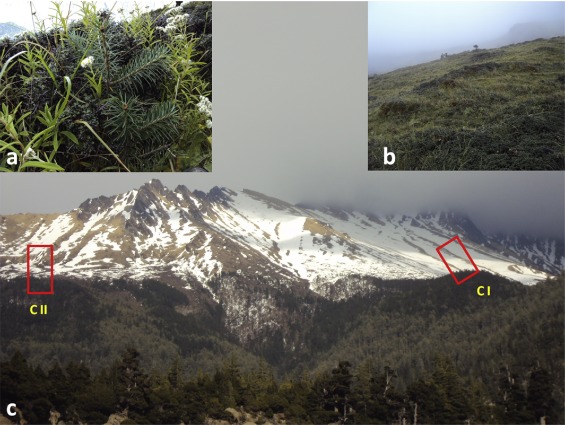It is important to identify environmental factors associated with treeline formation in order to better understand and predict treeline response to changing climate. Mustang (Trans-Himalaya) of central Nepal is experiencing significant warming with stable precipitation in the recent decades. This region, therefore, provides a unique opportunity to study the climate response of vegetation in this water-limited high altitude environment.
Mr. Achyut Tiwari, a Nepalese Ph.D candidate in Xishuangbanna Tropical Botanical Garden (XTBG), and his teachers used inventory data and tree ring records to study the recruitment dynamics and climate response of the Abies spectabilis treeline in the Trans-Himalayan region. The researchers employed dendrochronological techniques for age estimation and radial growth measurement of trees within alpine timberline ecotone (ATE) transects and closed timberline forest (CTF).
The study showed comparatively younger treeline stands indicating that juveniles preferentially established in recent decades (1990-2000AD). The treeline was found at a relatively low elevation, potentially due to the low precipitation of the region. The treeline was shaped by the unique topographic configuration and climate circulation system in the Trans-Himalayan arid region. Climate data for the study region showed a significant warming and a stable precipitation trend over recent decades.
The researchers identified higher regeneration in the recent decades at alpine timberline ecotone. They regarded that the higher regeneration at the upper forest limit and moderate range expansion of the treeline is likely to be critically dependent on the maintenance of water availability through snowmelt and precipitation as temperature increases.
The study entitled “Gradual expansion of moisture sensitive Abies spectabilis forest in the Trans-Himalayan zone of central Nepal associated with climate change” has been published in Dendrochronologia.
Contact
ZHOU Zhekun, Ph.D Principal Investigator
Key Laboratory of Tropical Forest Ecology, Xishuangbanna Tropical Botanical Garden, Chinese Academy of Sciences, Mengla, Yunnan 666303, China
Tel: 86-871-65109223
E-mail: zhouzk@xtbg.ac.cn
Abies spectabilis seedling under Rhododendron bush
(a), A. spectabilis sapling at the upper limit in Chimang I transect
(b), photo showing study transects (transect I and II) at Chimang (CI and CII).

